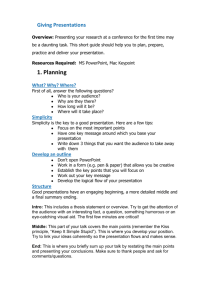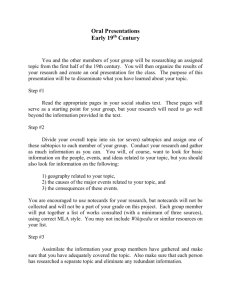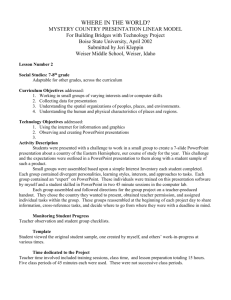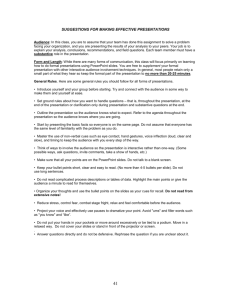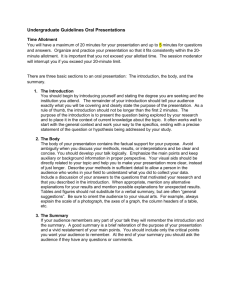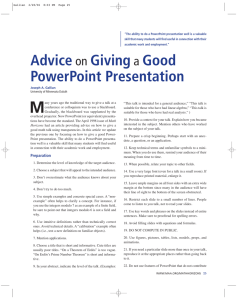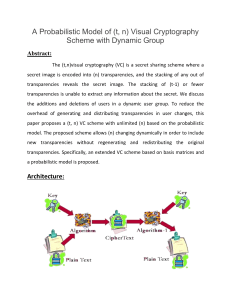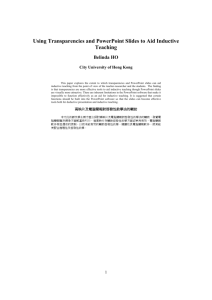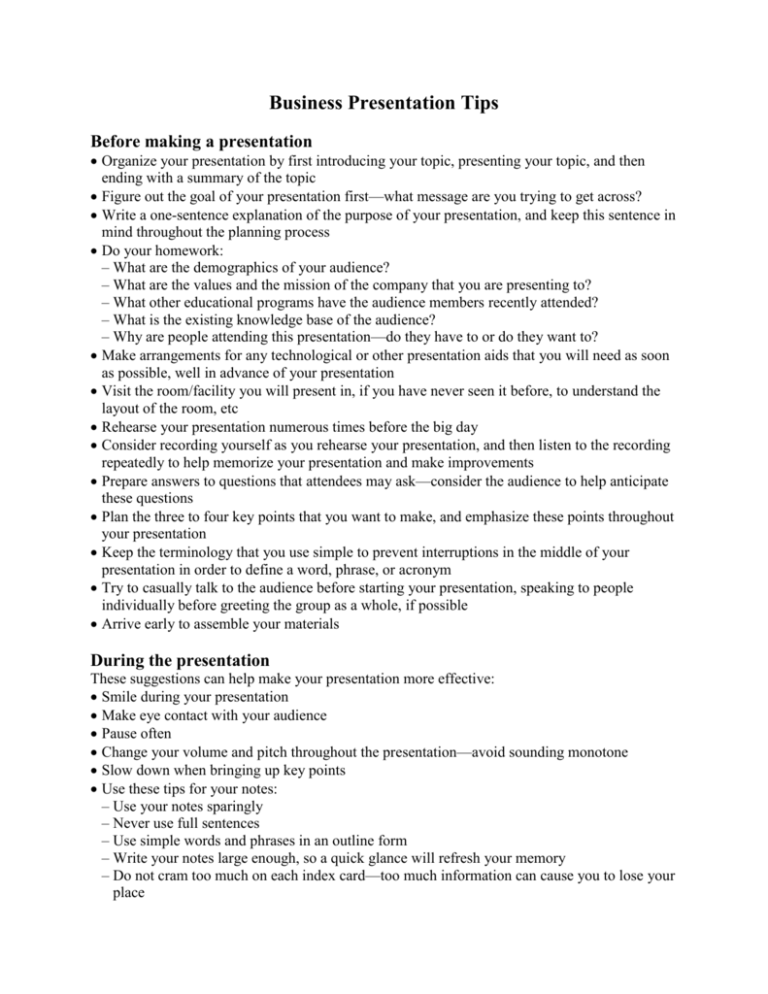
Business Presentation Tips
Before making a presentation
Organize your presentation by first introducing your topic, presenting your topic, and then
ending with a summary of the topic
Figure out the goal of your presentation first—what message are you trying to get across?
Write a one-sentence explanation of the purpose of your presentation, and keep this sentence in
mind throughout the planning process
Do your homework:
– What are the demographics of your audience?
– What are the values and the mission of the company that you are presenting to?
– What other educational programs have the audience members recently attended?
– What is the existing knowledge base of the audience?
– Why are people attending this presentation—do they have to or do they want to?
Make arrangements for any technological or other presentation aids that you will need as soon
as possible, well in advance of your presentation
Visit the room/facility you will present in, if you have never seen it before, to understand the
layout of the room, etc
Rehearse your presentation numerous times before the big day
Consider recording yourself as you rehearse your presentation, and then listen to the recording
repeatedly to help memorize your presentation and make improvements
Prepare answers to questions that attendees may ask—consider the audience to help anticipate
these questions
Plan the three to four key points that you want to make, and emphasize these points throughout
your presentation
Keep the terminology that you use simple to prevent interruptions in the middle of your
presentation in order to define a word, phrase, or acronym
Try to casually talk to the audience before starting your presentation, speaking to people
individually before greeting the group as a whole, if possible
Arrive early to assemble your materials
During the presentation
These suggestions can help make your presentation more effective:
Smile during your presentation
Make eye contact with your audience
Pause often
Change your volume and pitch throughout the presentation—avoid sounding monotone
Slow down when bringing up key points
Use these tips for your notes:
– Use your notes sparingly
– Never use full sentences
– Use simple words and phrases in an outline form
– Write your notes large enough, so a quick glance will refresh your memory
– Do not cram too much on each index card—too much information can cause you to lose your
place
Do not rely on a PowerPoint presentation to get your point across
Allow for audience involvement, but do not rely on it to fill time
Remain focused on what you are saying as you go—thinking ahead is what causes people to
stumble over their words
Watch your body language throughout your presentation, including:
– Crossing your arms in front of you
– Fidgeting with your notes or a pen
– Leaning on a podium or table
– Using extravagant hand motions throughout your presentation
Move around during your presentation—do not stand rigidly behind a podium or table
Do not read off of the handouts that you provide—handouts should supplement your
presentation, not provide a detailed overview of your topic
Do not apologize for your nervousness or any minor slipups that occur during your
presentation—just continue with your presentation
Do not end a presentation with the question-and-answer session—provide a brief summary of
the key points after the question-and-answer session, and then thank the attendees for their
attention
Tips for making a PowerPoint presentation
These tips will help with PowerPoint presentations:
Presentation experts recommend the “66” rule—no more than 6 bullets/slide and no more
than 6 words/bullet
Do not use full sentences in PowerPoint presentations—stick to short phrases instead
Never drop below 18-point type
Choose a bold, simple font, such as Arial
Select a font color that contrasts sharply with the background
Avoid distracting the audience with too much animation or clip art
Do not use too many different slide transitions during your presentation—this may distract
your audience, making them wonder where the next slide will come from rather than paying
attention to the material that you are presenting
Consider putting tables and graphs on handouts to pass out to supplement or replace the items
appearing in your PowerPoint presentation
Distribute your PowerPoint handouts, if you have made copies, at the end of the presentation—
this prevents attendees from reading ahead
Keep a copy of the slides in front of you, so you do not need to turn your back on the audience
to look at the slides
Tips for creating overhead transparencies
These tips can help you create effective overhead transparencies:
Use portrait view, whenever possible
Use the “66” rule—no more than 6 bullets/transparency and no more than 6 words/bullet
Never use type smaller than 18 points
Use dark printing on light backgrounds
Decide ahead of time whether you want to change your own transparencies or whether you
want someone else to do this for you—determine when the best time is to change the
transparencies or to cue someone else to change them to avoid distracting the audience
Number your transparencies, so you can keep them in order
References and recommended resources
Russell W. Business presentations for success. Available at:
http://presentationsoft.about.com/od/powerpointinbusiness/a/busines_success.htm. Accessed
April 16, 2012.
Tisdale JJ. Effective Business Presentations. Upper Saddle River, NJ: Pearson Prentice Hall;
2005.
Toastmasters International. Business presentations. Available at:
http://www.toastmasters.org/MainMenuCategories/FreeResources/NeedHelpGivingaSpeech/Bus
inessPresentations.aspx. Accessed April 16, 2012.
Review Date 4/12
G-0610


